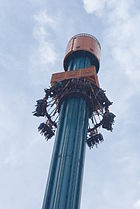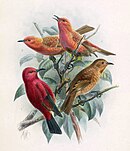|
Today's featured article Each day, a summary (roughly 975 characters long) of one of Wikipedia's featured articles (FAs) appears at the top of the Main Page as Today's Featured Article (TFA). The Main Page is viewed about 4.7 million times daily. TFAs are scheduled by the TFA coordinators: Wehwalt, Dank and Gog the Mild. WP:TFAA displays the current month, with easy navigation to other months. If you notice an error in an upcoming TFA summary, please feel free to fix it yourself; if the mistake is in today's or tomorrow's summary, please leave a message at WP:ERRORS so an administrator can fix it. Articles can be nominated for TFA at the TFA requests page, and articles with a date connection within the next year can be suggested at the TFA pending page. Feel free to bring questions and comments to the TFA talk page, and you can ping all the TFA coordinators by adding " |
Featured article candidates (FAC) Today's featured article (TFA):
Featured article tools:
|
From today's featured article
Gothic boxwood miniatures are very small Christian-themed wood sculptures produced during the 15th and 16th centuries in the Low Countries, at the end of the Gothic period and during the emerging Northern Renaissance. They consist of highly intricate layers of reliefs made from fine-grained boxwood, often rendered to a nearly microscopic level. Of the approximately 150 surviving examples, the majority are statuettes, skulls, coffins, or spherical beads known as prayer nuts; some 20 are in the form of polyptychs, including triptych and diptych altarpieces, tabernacles, and monstrances. They typically contain imagery from the life of Mary, the crucifixion of Jesus, or vistas of Heaven and Hell. Each miniature required exceptional craftsmanship and may have taken decades to complete. Important collections are in the Art Gallery of Ontario, the British Museum, and the Metropolitan Museum of Art in New York. (Full article...)
From tomorrow's featured article
Falcon's Fury is a freestanding Sky Jump drop tower attraction at Busch Gardens Tampa Bay, an amusement park in Tampa, Florida. Manufactured by Intaride, a subsidiary of Intamin, the ride is North America's tallest freestanding drop tower, at a maximum height of 335 feet (102 m). It is also the first drop tower to use 90-degree tilting seats, facing riders straight down through five seconds of free fall. They reach a speed of 60 miles per hour (100 km/h) before rotating back into a vertical position and decelerating at about 3.5 Gs. The ride's name is meant to suggest a falcon's ability to dive steeply at high speed to capture prey. Due to the height of the attraction, approval from the Federal Aviation Administration was required. Construction was delayed until 2013, and the opening date was also delayed by mechanical and technical issues. Falcon's Fury opened to park employees in August before a soft opening on August 16, 2014, and an official opening on September 2, 2014. (Full article...)
From the day after tomorrow's featured article
The Laysan honeycreeper (Himatione fraithii) is an extinct species of finch, first recorded in 1828, that was endemic to Laysan in the Northwestern Hawaiian Islands. Its length was 13–15 cm (5–6 in) with a 64–69 mm long (2.5–2.7 in) wing. It was bright scarlet vermilion with a faint tint of golden orange on the head, breast and upper abdomen; the rest of its upper parts were orange scarlet. The lower abdomen was dusky gray fading into brownish white. The wings, tail, bill, and legs were dark brown. The bill was slender and downturned. It was nectarivorous and insectivorous, gathering nectar and insects from flowers. The breeding season was probably between January and June, and the clutch size was four or five eggs. In 1903, domestic rabbits were introduced to the island and destroyed its vegetation. In April 1923, only three Laysan honeycreepers were found, one of which was filmed. On April 23, a sandstorm hit the island, and the last birds perished due to lack of cover. (Full article...)



